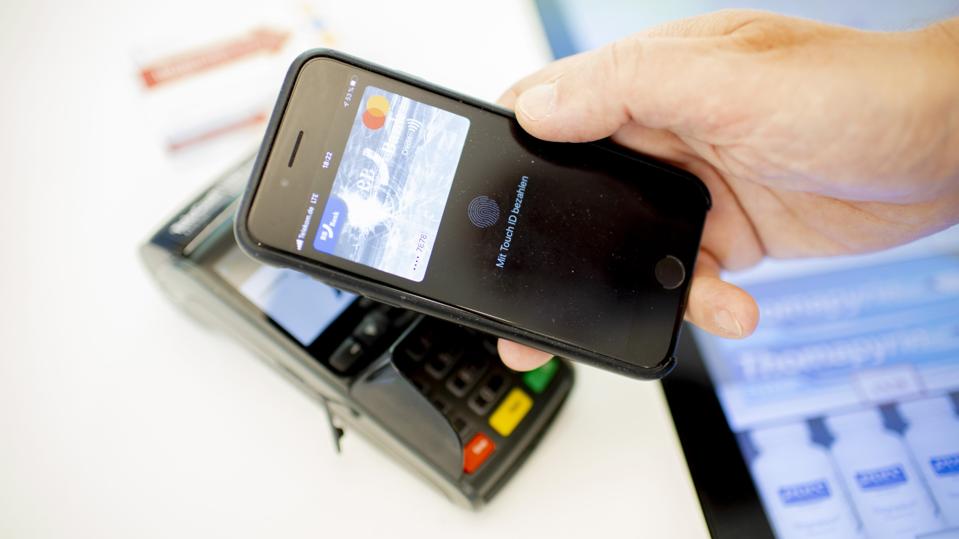Like many other countries, the UK has gone contactless. Almost all (93%) in-store card payments below £100 were made using a contactless tap rather than a chip insert or stripe swipe. So now that the transition to tap and pay via card or phone or key fob is almost complete, what’s next?
Moving To Account-to-Account
I’m heading off to the annual Merchant Payments Ecosystem conference in Berlin next week so naturally I am wondering what the big European retailers, payment processors and financial services organisations are going to be talking about and, in particular, I am wondering what will be the next big transition in retail payments. Might it be cryptocurrency, given Bitcoin’s vertiginous climb over recent weeks? I remain sceptical. What about Central Bank Digital Currency (CBDC) as a contender? Well, that is certainly coming but it is years away. No, I think the next big thing in retail payments is going to account-to-account (A2A) payments: already here, as the old William Gibson saying goes, but unevenly distributed.
This time last year I said that A2A payments would soon become “a real alternative” to card payments and I stand by that view. What has changed is my view of the timescales. In Europe, where the EU has agreed rules whereby payment service providers such as banks — which provide standard credit transfers in euros — will also be required to offer the service of sending and receiving instant payments in euros, perhaps the shift to A2A will accelerate faster than I thought, especially since these rules also stipulate that if there are charges for this service they must not be higher than for standard credit transfers.
(Also under the new rules, payment providers will be required to check that in all credit transfers the payees account number and name must match in order to alert the payer to possible mistakes or fraud before a transaction is made.)
Data Bridge Research predict that instant payments will account for one in three of all consumer transactions globally by 2029 and the management consultants Bain are forecasting peak card (in the US market) in the same timeframe, although I think it might come earlier as merchants look for alternatives to the traditional cards rails to deliver lower costs, faster settlement and better data. That last point is important, because business customers (small businesses, in particular ) don’t simply want faster payments, they want the better cash management, simplified payments processing, automated invoicing and integrated accounting processes that can be delivered using richer data sets. Given these dynamics, it is hardly a radical prediction that instant payments will be the next shift in retail payments, whether via new schemes (eg, Pix in Brazil, Swish in Sweden, UPI in India) or inside retailer apps.
(Pix is a prime case study. Processing more than three billion transactions per month, it has a staggering 70% adoption rate among Brazilian adults. The central bank has initiatives to enhance cross-border payments, positioning Pix as a frontrunner and offering insights for other countries seeking to develop their own instant payments solutions.)
Retailers are keen to exploit the new possibilities. Major players such as Kroger and Walmart have talked about how they are considering using instant payments. They too are interested in improving processes beyond POS. A good example is the ability to deliver instant refunds back into a consumer’s account.Matt Howarter, Senior Director Payments Services at Walmart, said last year that almost half of the calls to their call centre are “Where is my refund?” and instant payments present the perfect opportunity improve that customer experience.
As an example of how things are developing on retail front, take a look at what is going on in Ireland, where Revolut will soon launch in-store payments and more business banking services. In Ireland, over 3,000 merchants are ready for Revolut Pay in-store payments via QR code with a ‘next generation’ payment terminal. The service works online too. Aer Lingus has Revolut Pay incorporated on its booking website so that customers can pay either via a saved card or directly using their Revolut account balance. It seems to me that online is the low hanging fruit here, because merchants will be happy to cut out the card networks and provide rewards directly to their customers.
Already Here
This use of A2A is already growing in America as well as in Europe. Everlane, a clothing store, has enabled an alternative payment method known as “Catch” that enables customers to pay from their bank account. When Catch is used as a payment method with Everlane, the customer earns store credit that can be used for any future purchases. With FedNow in place, the use of similar methods is sure to increase. One of the key technology providers FIS is now certified to send and receive FedNow payments and it has more than two hundred clients in contract or in the pipeline for the new rails.
As merchants begin to incentivise customers to move towards A2A solutions, I think we will see much-needed competition in the retail payments space and competition, rather than regulation, is what will deliver faster, cheaper and less opaque payments for consumers and businesses alike.

